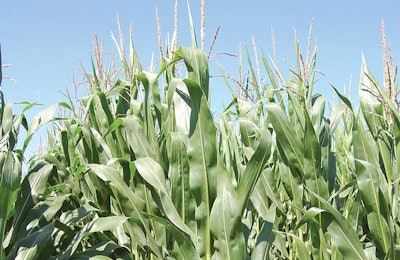
Purdue University economists break down recent USDA WASDE report
U.S. farmers planted about 5 million fewer acres of corn this year than they were expected to, but if yield is above the trend, they would set a production record, according to agricultural economists from Purdue University.
In their corn and soybean outlook webinar from July 13 examining the U.S. Department of Agriculture’s (USDA) World Agricultural Supply and Demand Estimates (WASDE), James Mintert and Michael Langemeier said the acreage of corn planted was surprising when compared with planting intentions.
U.S. farmers’ planting intentions were for 97 million acres of corn, but instead they planted about 92 million acres, according to USDA.
“That still leaves us up 2.3 million acres compared to a year ago, but still it’s a bit of a surprise, and really kind of the biggest single change that we’ve seen over these last few weeks,” Mintert said.
USDA’s trend yield is projected at 178.5 bushels per acre, but that could end up higher if there are favorable weather conditions throughout the growing season.
“Put that acreage number together along with the yield estimate, and we’re looking at the potential for a pretty big corn crop,” he said. “If we do push yields a little big above production trend, we’re going to set a new record here in 2020.”
Trend yield in 2020 would push U.S. corn production up to 15 billion bushels, but that’s 1 billion less than what was expected when planting intentions were released.
Mintert added that the corn crop conditions are favorable.
“If you look at the percentage of crop that’s in the good-to-excellent category, we’re well above last year, significantly above 2017, a little bit below ’16 and ’18, but nevertheless this is a crop that is off to a pretty good start,” he said.
USDA’s grain stocks estimate was “surprisingly large,” Mintert said, but that could be due to lower consumption of corn for feed in 2019 or an underestimation of the 2019 harvest. But, he said, livestock numbers in the U.S. are still pretty large, so there should be good feed consumption in 2020.
Big surprise in soybeans
There was a relatively small rise in soybean acres vs. planting intentions, which Langemeier said “was the big surprise” because of the lower corn acres planted.
“The expectation coming in was that, if we took acres away from corn, they would go to soybeans,” Mintert said.
However, Langemeier said a couple of states saw big increases in soybean acres planted.
“There were a couple of states that did increase soybeans quite a bit, which is worth pointing out, and the two states that probably increased the most from the planting intentions were Kansas – Kansas is looking at record soybean acreage – but also Indiana,” he said. “For Indiana, there was almost a complete switch from corn to soybeans of about 300,000 acres.”
USDA trend yield for soybeans is about 50 bushels per acre. If soybeans reach trend yield, it would be the third highest harvest on record. USDA’s production estimate is 4.13 billion bushels, which would be up 16% from 2019.
2020 soybean crop conditions are off to a good start, but August weather usually determines soybean yields, Mintert said.










